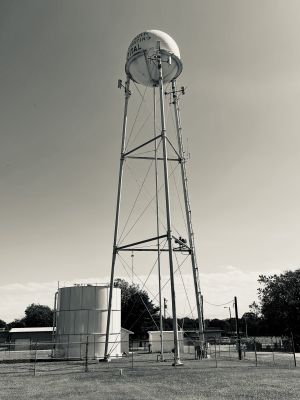Sheridan Water Supply Corporation- Tariff
Section E
- Member’s Responsibility.
- The Member shall provide access to the meter or sewer tap location as per the easement and service agreement. If access to the meter is hindered or denied, preventing the reading of the meter, an estimated bill shall be rendered to the Member for the month; and a notice shall be sent to the effect that access could not be gained. lf access is hindered or denied for three (3) consecutive months after proper notification to the Member, then service shall be discontinued, and the meter removed with no further notice. Conditions that may hinder access include, but are not limited to, fences with locked gates, vehicles or objects placed on top of meters or meter boxes, and unrestrained animals.
- The Member shall be responsible for compliance with all utility, local, and state codes, requirements, and regulations concerning on-site service and plumbing facilities.
All water connections shall be designed to ensure against on-site sewage contamination, back-flow or siphonage into the Corporation's water supply. In particular, livestock water troughs shall be plumbed above the top of the trough with air space between the discharge and the water level in the trough. (30 TAC 290.46, Texas Health & Safety Code Chapter 366).
2) For new service applications, a hose connection vacuum breaker must be installed on each faucet or hose bib that is connected to the potable water supply to prevent backflow to the water supply. HVBs must be installed at least 6 inches above the ground surface. Once the HVB is installed, no further adjustments are required.
3) The use of pipe and pipe fittings that contain more than 0.25% lead or solder and flux that contains more than 0.2o/lead is prohibited for any plumbing installation or repair of any residential or nonresidential facility providing water for human consumption and connected to the Corporation's facilities. Customer service pipelines shall be installed by the applicant. (30 TAC 290.46; RUS-'TX Bulletin 17ft0-9 (Rev. 05/17)).
4) All pipe and fittings used by the customer to convey sewage from its source to the sewer line must be a minimum of D-3034, SDR-35 or equivalent, 4-inch diameter pipe. No DWV (drain waste and vent) pipe or fittings will be allowed. All joints must be watertight, and pipe must be installed to the recommended grade. All household sewer customers who have potential for dirt, grit, sand, grease, oil, or similar substances must install and maintain a trap ahead of their entrance to the Corporation's sewer collection piping. A double cleanout is required at the property line and required at the house. The Corporation may impose other site-specific requirements. All sewer and potable water service pipeline installations must be a minimum of nine feet apart and meet all applicable plumbing standards for crossings, etc.
Requirements for Traps:
(a) Discharges requiring a trap include but are not limited to:
(1) grease or waste containing grease in amounts that will impede or stop the flow in the public sewers;
(2) oil, flammable wastes;
(3) sand, and other harmful ingredients.
(b) Any person responsible for discharges requiring a trap shall, at his own expense, and as required by the approving authority:
(1) Provide equipment and facilities of a type and capacity approval by the approving authority;
(2) locate the trap in a manner that provides ready and easy accessibility for cleaning and inspection; and
(3) maintain the trap in effective operating condition.
(c) Approving Authority Review and Approval (By the Board of Directors or Agency):
(1) If pretreatment or control is required, the approving authority shall review and approve design and installation of equipment and processes.
(2) The design and installation of equipment and processes must conform to all applicable statutes, codes, ordinances, and other laws.
(3) Any person responsible for discharges requiring pretreatment, flow equalizing or other facilities shall provide and maintain the facilities in effective operating condition at his own expense.
Service shall be discontinued without further notice when installations of new facilities or repair of existing facilities are found to be in violation of this regulation until such time as the violation is corrected.

